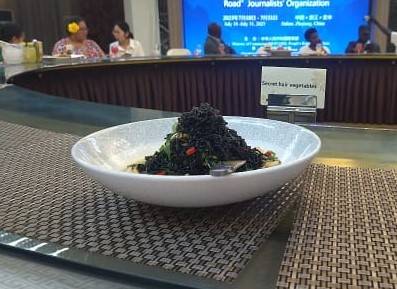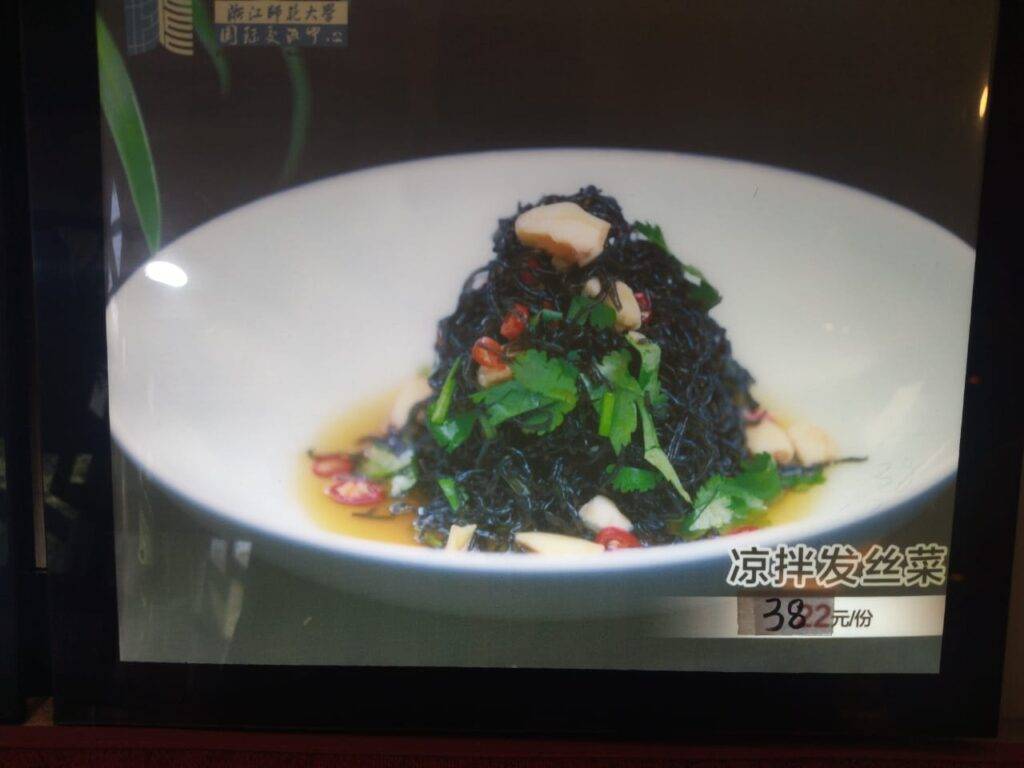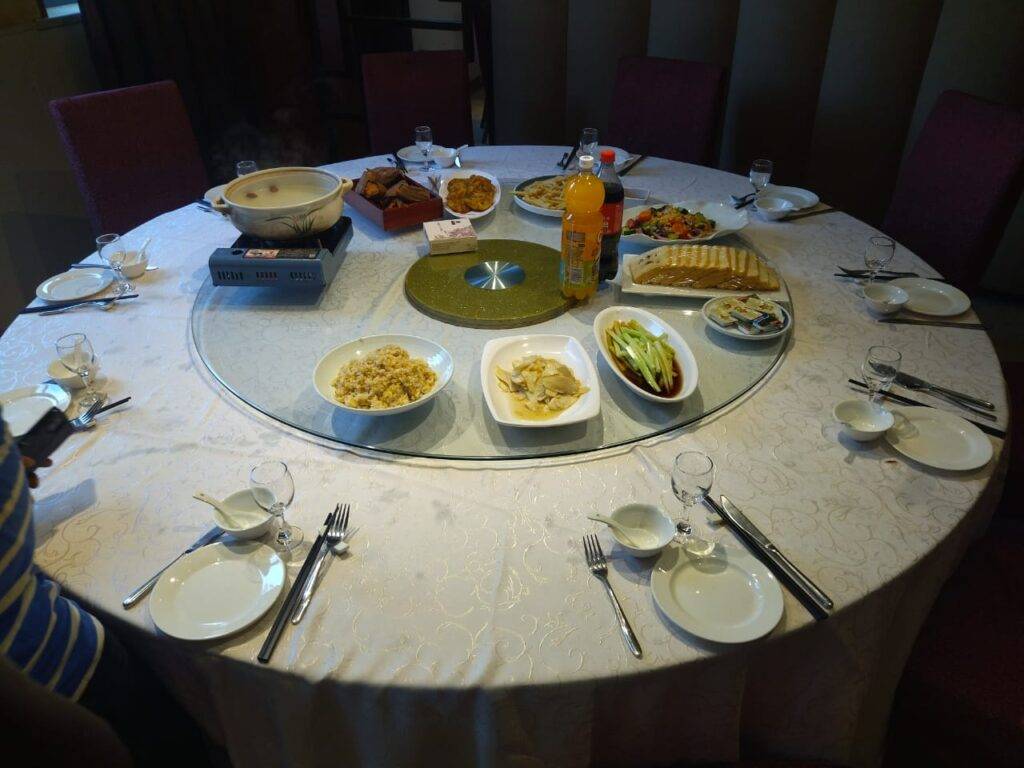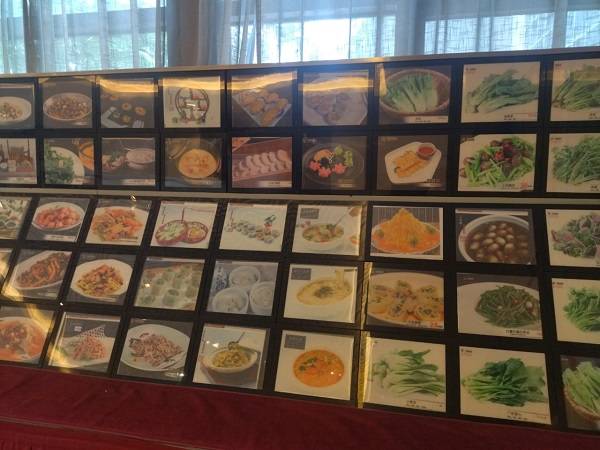
In the realm of culinary wonders, where flavours dance and ingredients weave together harmoniously, hair and food are two entities that do not often find themselves in one space.
It is for this reason that chefs and caterers meticulously cover their hair when preparing meals, to ensure that not a single strand will disrupt the symphony of flavours they create.
As it is widely known, finding a strand of hair in one’s plate can be quite repulsive.
So, when I first laid eyes on the menu featuring a dish called “Secret Hair Silk Vegetables” at a welcome dinner for participants of a media seminar in China recently, my curiosity was piqued.
I am familiar with the romantic relationship between the words “hair” and “secret”. Growing up in Ghana’s ancient capital, Cape Coast, I saw my eldest sister, Okailey, a hair stylist, seamlessly blending artificial hair extensions with that of her client’s, creating an illusion of natural beauty. Ghanaian women have christened the hairstyle “secret”.
But for vegetables and hair to coexist on a plate in faraway Jinhua, China was a combination I had never come across before.
As I mulled over this unusual culinary creation, behold the revolving dinner table at the centre of the room brought before me the intriguing meal.
From afar, it appeared as if massive strands of hair were cascading down, providing a spectacle that was both intriguing and slightly unsettling. Little did I know that what seemed like a cultural shock would turn out to be a delightful and spicy journey for taste buds in the room.

Initially, it was left untouched as though it was a forbidden dish. But after a few rounds, the cutlery of the adventurous diners had given the dish a “haircut”.
Intrigued by this unexpected twist, I embarked on a quest to unravel the captivating story behind the recipe and how it came to be part of China’s rich culinary heritage.

Busy schedule of the kitchen staff at the hotel and language barrier created a strong hindrance, but my persistence to learn more about the dish led me to a waiter who told me it was sea grass and just a meal with no special story.
Not satisfied, I inquired from our Chinese translator for the seminar, fondly called Viki, who did not only confirm it was sea grass and that it was called hair vegetable because when dried, the grass became black and looked like hair. She asked me to search for seaweed salad if I wanted more information about it.
My search for more information led me to the website of Thye Shan, an e-commerce platform that has been providing quality traditional Chinese medicinal products and services. With over 60 years of history, the website explains that Fa Cai translates into “get rich” or “prosperity and fortune” in the Mandarin language. It is a delicacy that is considered an auspicious food, and is a must-have ingredient during the Lunar or Chinese New Year.
Fa Cai is a bacteria under the Nostocales family and is known by various names such as Black Moss, Fat Choy, FaCai, Fat Choi, and Hair Vegetables. It is rich in protein and carbohydrates and has many health benefits. It lowers blood pressure and strengthens the respiratory system. It is often used in soups, stews, and porridges that also include dried oysters, dried scallops, roasted pork belly, dried Chinese mushrooms, abalones, sea cucumber, fish maw, oil, ginger, garlic, oyster sauce, chicken stock, and sugar.
Thye Shan emphasizes that authentic Fa Cai should be soft, tender, and yet crisp after cooking. It should also be separated into individual strands and have a fresh taste. The county of origin for Fa Cai is the XinJiang Gobi Desert, China, and it is a natural vegetarian product without added colouring or flavouring.
I continued my research on another e-shop website, Po Wing Hong Food Market, which was established in 1980. They stated that Fat Choy/Black Moss (facài) is a terrestrial algae and cyanobacteria that grows in soil and is not a vegetable. Its Chinese name derives from its black colour, slender silkiness and resemblance to hair. Because Fat Choy means the same as “Get Rich” in Mandarin, it has become a centre dish during the Chinese New Year.
According to Po Wing Hong, Fat Choy contains high iron content that helps in the production of red blood cells. It is low in fat and cholesterol and has cooling properties that can relieve constipation, lower high blood pressure, and expels heat and phlegm. While it does not have any specific taste, it can absorb the fragrances of other dishes.
Intrigued by the uniqueness of Fa Cai and Fat Choy, I visited another website called Carry it like Harry, which categorised them under rare and unusual recipes. The website had featured Facai under its “Rare and Unusual Recipes” section. It revealed that Facai, Latin name Nostoc commune var flagelliforme, is a moss that grows under the sand in the desert.
It serves to bind the sand to the ground to prevent it from being blown away and only grows best in stormy, rainy weather, which is rare in deserts. Its consumption has been documented as far back as AD 1611 during the Qing dynasty, with hints of its consumption dating even further back.
Only south coastal Chinese eat it, and it is considered a delicacy, with consumption limited to Chinese New Year celebrations. The legend goes that an exiled general named Su Wu relied on this delicacy to survive in the desert for 19 years during the Han dynasty. I did not find any information that the vegetable helps hair growth though, but I would not be surprised if it does, looking at the list of its health benefits.
My exploration of the elusive hair vegetables brought me to a profound realisation that the secret hair vegetables were not merely a culinary delight but an invaluable piece of China’s heritage, steeped in tradition and history. Although the dish never graced our dining table again during our stay in China, the mere thought of savouring it fills me with anticipation and excitement.
Having tasted different Chinese foods during my stay, including Kung Pao Chicken, Wenzhou fish cake, hot pot soup, and the spicy noodles we bought at the Guangzhou airport, I am now more determined than ever to explore and celebrate the diverse culinary treasures of China and its fascinating past.
A reader may be wondering if I tasted frog or snake meat. Well, since the dish under focus is called secret hair vegetables, I guess that information will remain my little secret.
BY JONATHAN DONKOR




